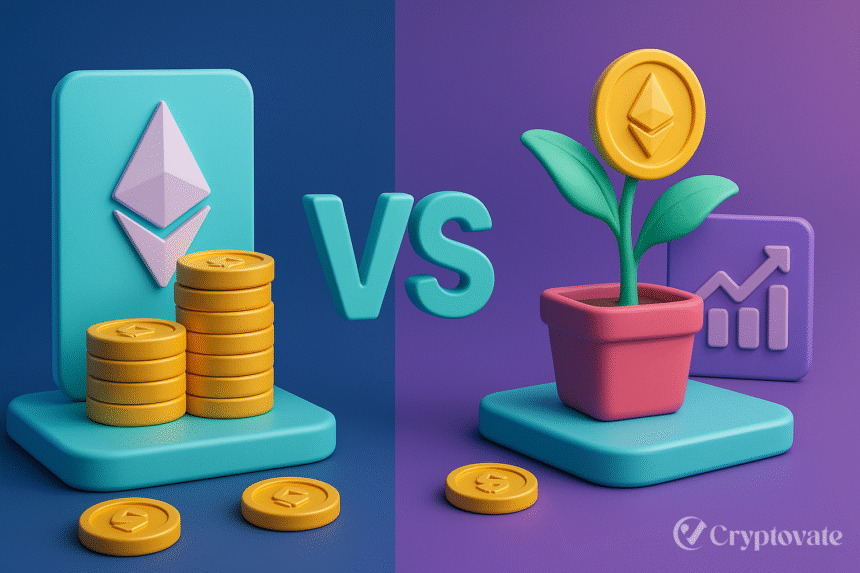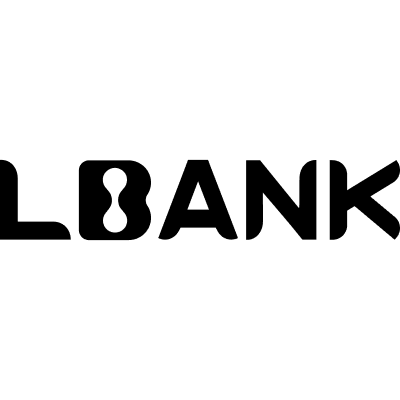– Ad –
| Getting your Trinity Audio player ready... |
Decentralized Finance (DeFi) has transformed how we earn passive income with cryptocurrencies. Two leading DeFi strategies—staking and yield farming—provide compelling ways to increase your cryptocurrency assets. But which is right for you? This article breaks down their differences, benefits, risks, and ideal use cases to help you decide, whether you’re a beginner or a seasoned investor.
What Is Staking?
Staking involves locking up your cryptocurrencies in a Proof-of-Stake (PoS) blockchain, like Ethereum or Solana, to support network operations such as validating transactions. In exchange, you receive rewards, usually paid in the same cryptocurrency. Staking is straightforward: you hold your coins in a compatible wallet or platform, choose a validator, and start earning.
- Average Returns: 3-14% APY, depending on the network (e.g., Ethereum at ~3.2%, Cardano at ~5%).
- Key Platforms: Binance, Kraken, Coinbase, or native wallets like MetaMask.
- Time Commitment: Minimal; often set-and-forget with lock-up periods (days to months).
What Is Yield Farming?
Yield farming, a more dynamic DeFi strategy, involves providing liquidity to decentralized exchanges (DEXs) like Uniswap or lending platforms like Aave. You deposit crypto into liquidity pools, enabling trading or lending, and earn rewards, often in the form of platform tokens or fees.
- Average Returns: 5-30% APY or higher, depending on the pool (e.g., USDC/USDT on OKX at ~28.54%).
- Key Platforms: Uniswap, PancakeSwap, Curve Finance, Aave.
- Time Commitment: Active management to optimize returns and monitor risks.
For a deeper dive into yield farming mechanics, check out our Maximizing Your Profits: The Ultimate Guide to Yield Farming
Key Differences Between Staking and Yield Farming
| Factor | Staking | Yield Farming |
| Complexity | Simple; beginner-friendly | Complex; requires DeFi knowledge |
| Risk | Low; mainly lock-up risks | High; includes impermanent loss, hacks |
| Returns | Stable, predictable (3-14%) | Variable, potentially higher (5-30%+) |
| Management | Passive; minimal oversight | Active; requires monitoring |
Pros and Cons of Staking
Pros ✅
- Easy to start, ideal for beginners.
- Lower risk, with stable returns.
- Supports blockchain network security.
Cons ❌
- Lower returns compared to yield farming.
- Lock-up periods may limit access to funds.
- Rewards depend on network performance.
Pros and Cons of Yield Farming
Pros ✅
- High potential returns, especially in new pools.
- Flexible; withdraw funds anytime (platform-dependent).
- Opportunities to earn multiple tokens.
Cons ❌
- Significant risk of impermanent loss and smart contract vulnerabilities.
- Requires active management and research.
- Volatile returns tied to market conditions.
Which Strategy Should You Choose?
Your decision hinges on your objectives, risk appetite, and level of expertise:
- Choose Staking If: You’re new to DeFi, prefer low-maintenance strategies, or want stable returns with minimal risk. Staking suits long-term holders who don’t mind lock-up periods (e.g., staking ETH on Lido).
- Choose Yield Farming If: You’re comfortable with DeFi, willing to monitor markets, and seeking higher returns. Yield farming suits active investors who can manage risks like impermanent loss (e.g., farming on Uniswap).
Pro Tip: Diversify by combining both strategies. Stake stable assets like ETH for security and farm volatile pairs like ETH/USDT for higher yields. Consistently choose trusted platforms and carefully investigate potential risks.
Conclusion
Staking and yield farming offer unique ways to earn passive income in DeFi. Staking is simpler and safer, ideal for beginners, while yield farming offers higher rewards for those willing to navigate its complexities. Assess your risk tolerance and time commitment before diving in. For advanced yield farming strategies, explore our Ultimate Yield Farming Guide to maximize your DeFi profits.
FAQs
Is staking safer than yield farming?
Yes, staking is generally safer as it avoids risks like impermanent loss and smart contract vulnerabilities, but it may offer lower returns.
Can I do both staking and yield farming?
Absolutely! Many investors stake stable assets for consistent returns and yield farm volatile pairs for higher profits, balancing risk and reward.
What’s the minimum amount needed for staking or yield farming?
Staking often requires small amounts (e.g., 0.01 ETH), while yield farming may need more due to gas fees and pool requirements. Check platform minimums.
How do I choose a reliable platform for staking or yield farming?
Opt for established platforms like Binance for staking or Uniswap for yield farming. Research audits, user reviews, and security features before investing.

















